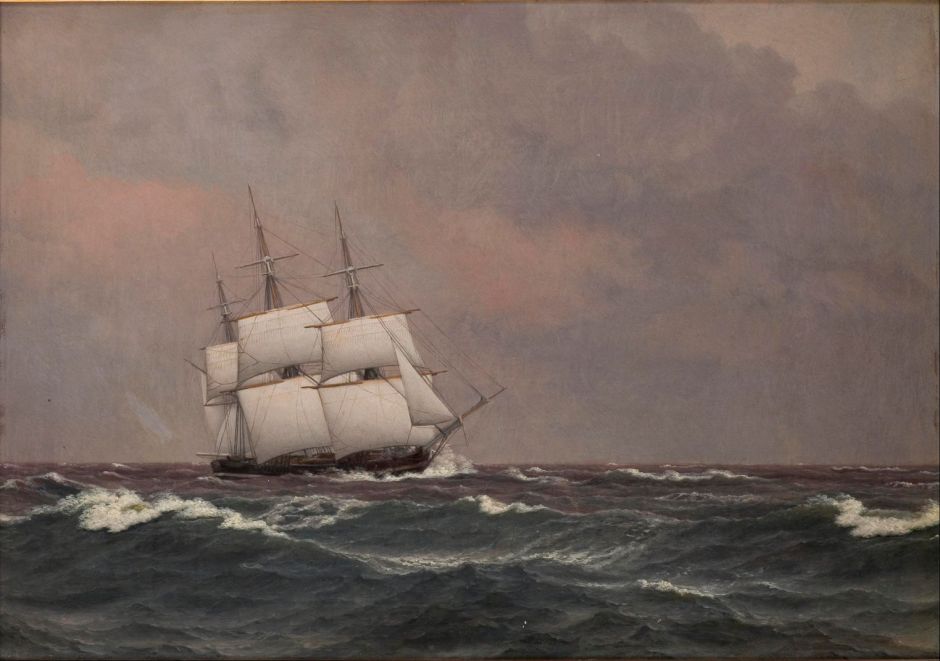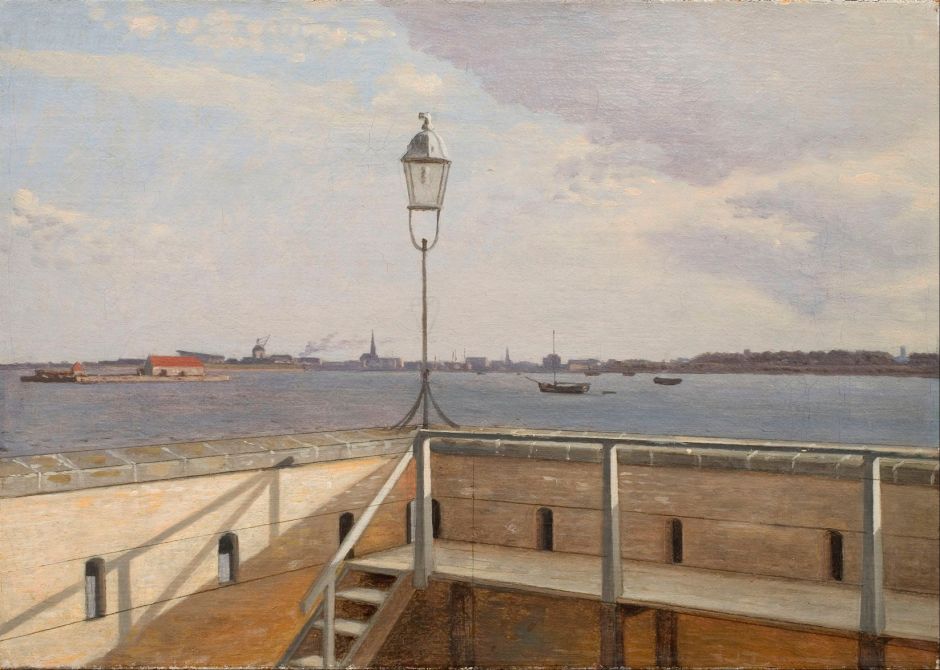“Christoffer Wilhelm Eckersberg”
Kasper Monrad et al.
Prestel for Statens Museum for Kunst, November 2015
Hardback, 27.7 x 25.2 cm (10.9 x 9.8 in), 238 pp., £40.00/$60.00
ISBN 978 3 7913 5482 8
Not available for Kindle nor in the iTunes Store.
Christoffer Wilhelm Eckersberg (1783-1853) is rightly held to be the ‘father’ of Danish painting. Trained as a history painter at the Royal Academy of Fine Arts in Copenhagen in the opening years of the 1800s, he then took to landscapes. He was taught by Jacques-Louis David in Paris, after which he learned plein air skills in the Roman Campagna.
Following his return to Denmark, he was appointed Professor at the Royal Academy, where he introduced plein air painting and female life models to the curriculum. During this period he was a prime mover in the Golden Age of painting in Denmark, and his many pupils such as Christen Købke were at its heart.
This book is at once the first monograph in recent years on Eckersberg’s work, and the catalogue to his first major exhibition in over thirty years. However, it is constructed and structured more as a monograph than a mere catalogue: its seven essays fill the greater part of the book, and illustrations of the paintings appear in those chapters rather than the brief catalogue which follows them.
Monograph
The first chapter, by Kasper Monrad, is entitled Eckersberg on the European Stage, and is (beneficially) long and wide-ranging. He examines his training and early work, leading up to his time with David in Paris, a couple of decades after the French Revolution. Eckersberg explored the use of linear perspective projections to increase the impression of depth from quite early on, and Monrad illustrates this well.
His time in Rome was an even greater influence: he not only learned plein air painting, but became one of its most skilled exponents. Monrad makes valuable comparisons with the earlier work of Valenciennes, and a detailed analysis of Eckersberg’s view of Castel Sant’Angelo, against Corot’s and Söderberg’s views. These magnificent paintings are my personal favourites.

Following his return to Denmark, Eckersberg proved a subtly innovative portraitist, and he started to paint marine works. Monrad compares his cloud studies with those of Constable, and concludes that September 1826 was a watershed, following which Eckersberg’s clouds were more accurate and nuanced. Monrad concludes with a short examination of his academic career and teaching.

Henrik Holm takes the second chapter to consider the ‘truth’ in Eckersberg’s landscapes. He tackles this through Kant, with his view of ‘traces of invisible reason’ in nature. Holm shows Eckersberg’s landscapes as being governed by this reason, with their tight compositions controlled by perspective projection. Included in this chapter is Eckersberg’s wonderful A Pergola (1814/16), which is an excellent example of a landscape contained within the view, as I discussed in my Landscape Visions series; sadly I have still been unable to find a usable image of this to show you.
Anna Schram Vejlby takes the third chapter on to Eckersberg’s portraits, which she considers were intended as good likenesses, of accurate verisimilitude. She illustrates this in the context of some of David’s portraits.

The following chapter, by Neela Struck, tackles Eckersberg’s nudes, which he painted throughout his long career. Eckersberg showed early enthusiasm for life classes, but surprisingly David only used male models. When painting nudes, he was careful to make a complete picture (with accurate genitalia) rather than idealised or limited studies. His introduction of female life classes to the Royal Academy was radical and of importance to the Golden Age.

Eckersberg intended to devote his career to history painting, so the fifth chapter, by Jesper Svenningsen, considers his narrative work. From his early simple narratives about the dramas of human emotion, his time with David directed him to mythology, and later biblical narratives. Indeed his narratives even took to the sea, in some of his marines.

After several references to his use of linear perspective, the sixth chapter, by Gry Hedin, looks in detail at Eckersberg’s image construction. Drawing on Valenciennes’ established and popular book on perspective, and noting Eckersberg’s connections to scientists such as H C Ørsted, the eminent physicist, Hedin concludes that his merging of the study of nature with perspective projection stands as a heroic attempt to capture the mutability of the world.

The essays conclude with David Jackson’s view from outside the somewhat parochial art history of Denmark. He points out that Eckersberg’s superb paintings from Rome would place better later in the 1800s, rather than in the first couple of decades. He moves on then to establish Eckersberg’s crucial role in the foundation of the Danish Golden Age, and so to end the monograph.
Catalogue
The catalogue itself is relatively unconventional: the 99 oil paintings and one plaster figure which are the main body of the exhibition are illustrated in tiny thumbnails, with a text summary, references, and an invariably very informative short account of each. They are listed in chronological order, which is helpful so long as you know roughly when a work was painted. As each is shown elsewhere in the book, their discussion and reproduction are then indexed for easy access.
Twenty-four drawings and watercolours are shown similarly in thumbnails, with brief information on each, as are another plaster cast, a couple of manikins, and a model boat.
End-matter includes brief biographies of the contributors, and an excellent eight pages of references. But there is no index: the only way of disovering where a given painting is discussed or illustrated is through the catalogue; if you want to look up a subject or proper name, then you are out of luck. I am afraid that is not acceptable: even in an electronic publication of this quality, an index is essential, and given that there is no electronic version available, it is crazy to have to thumb through the pages in search of content.
Opinion
Apart from its staggering lack of an index, this book is outstanding. Its illustrations are superb, and its structure ensures that the reader obtains maximum value from both the text and those images. It is essential reading for those with any interest in nineteenth century painting, even if they had previously considered the Danish Golden Age to have been something of a local backwater.
Above all, though, it is a beautiful and fascinating exploration of an artist who, had he been French or British, would probably have been rated as one of the greatest of the century.
Exhibitions
Those for which this book is the catalogue are:
A Beautiful Lie – Eckersberg, Statens Museum for Kunst, København, Denmark, 8 October 2015 – 24 January 2016
Christoffer Wilhelm Eckersberg – Faszination Wirklichkeit, Hamburger Kunsthalle, Hamburg, Germany, 11 February 2016 – 16 May 2016
C. W. Eckersberg, Fondation Custodia, Paris, France, June – August 2016.
As I love all three cities, I am spoilt for choice.

